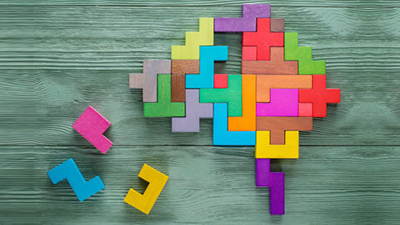Pervasive Development Disorders

Pervasive Development Disorders (PDD), also known as autistic spectrum disorders (ASD), refers to a group of conditions characterised by delays in the development of socialisation and communication skills. In this article, GP Principal Dr Gwyndaf Williams presents an overview of the disorder to assist school staff to gain an understanding of the condition together with some practical tips for planned support.
Historically, autism was subdivided into several different diagnoses such as:
- Asperger's Syndrome;
- Autistic disorder;
- Kanner's Syndrome;
- Childhood autism;
- Atypical autism;
- Pervasive Development Disorder Not Otherwise Specified (PDD-NOS).
However due to the commonality of characteristics these diagnoses were removed and replaced with the umbrella term 'autistic spectrum disorder'.
The characteristics of autism are highly variable, with a spectrum of how it presents and is experienced by different people. Symptoms may be noted as early as infancy, although the typical age of onset is before 3 years of age.
Pervasive Development Disorder Symptoms may include:
- Problems with using and understanding language;
- Difficulty relating to people, objects and events;
- Unusual play with toys and other objects;
- Difficulty with changes in routine or familiar surroundings;
- Repetitive body movements or behaviour patterns.
Although each autistic person is different with a different experience of autism, there are some common characteristics different to the experiences of most people such as:
- How language is used, talking may be different;
- The use of facial expressions, tone of voice and gestures (hand and body movements) may be different;
- Making and maintaining friendships may be difficult;
- Autistic people may be good at seeing patterns and seeing solutions to problems that others might not;
- Having set ways of doing things and finding it difficult to do them differently;
- Being very good at understanding and working with structured systems e.g. languages, music, computers;
- Having good attention to detail, especially at spotting mistakes;
- Having a passionate interest in a certain thing or things and as a result of this interest extensive knowledge is gained over a short space of time;
- Avoidance or seeking out certain sensations which are experienced more strongly than other people e.g. loud noises, ambient noises, specific textures;
- Being drawn to and eating a lot of particular foods whilst being unable to eat or be around other foods due to their texture or smell;
- Excelling at a particular part of a project but being unable or find difficulty identifying how it relates to the whole project;
- Be good at paying attention to detail, but finding it difficult to leave out details that are accurate that are not needed when talking to people or working on projects;
- Being very determined and driven, and keep going with tasks or problems when others may give up;
- A determination to make sure things are 'perfect' and sometimes forgetting to eat or sleep when working on something;
- A difficulty working in groups where there is no clear communication about what they are expected to do.
Practical support for children with Pervasive Development Disorder
Autistic children may struggle with the routines, environment and confines of school life however, there are some simple general ways they can be supported in addition to the individual needs specified in their care plans. This includes:
- Communicating clearly with the child using simple and direct language. This will avoid the child misunderstanding your expectations of them;
- Reducing any stimuli that the child is sensitive to e.g. getting them to wear headphones or ear defenders where loud or shrill noises are known to occur e.g. where bells or buzzers are sounded to mark periods of the day, where whistles are used to line up or gather children into groups;
- Identifying and tailoring environments so that the child feels more relaxed, where they find it easier to learn so they can better perform tasks;
- Incorporating their interests into learning activities. For example, if a child has an interest in trains, use images of them and associated/related words for writing, spelling and maths exercises;
- Ensuring additional measures are in place to support the child in busy environments where there are lots of different loud noises or higher levels of ambient noise e.g. concerts, playgrounds, dining halls;
- Structuring daily routines and providing a visual daily timetable, involving words and images, that describes the chronology of the daily tasks;
- Ensuring there is additional support for planned changes and transitions. Where changes to the daily routine are necessary e.g. a temporary change of teacher or room, an educational visit, or transitional events such as moving to another class or school are planned; additional action should be taken to support the child prior to the planned changes or transitions.
Pervasive Development Disorder example actions might include:
- Meeting new teachers in advance of temporary or permanent changes;
- Visiting the new rooms where they are expected to work;
- Providing pictures and talking about educational visits ahead of the visit;
- Be calm, resilient and persevere. What may work well one day may not another. It is important not to feel disillusioned or to assume that your strategies will not work the next day;
- Seeking the support of others. Regularly liaising with the child's parents and having discussions with Special Educational Needs Coordinators provides a wealth of knowledge about the individual child and will help determine the best way of supporting them.
Want to know more about supporting mental health? Check out our Supporting Mental Health and Wellbeing training.
Dr Gwyn Williams
GP Principal











